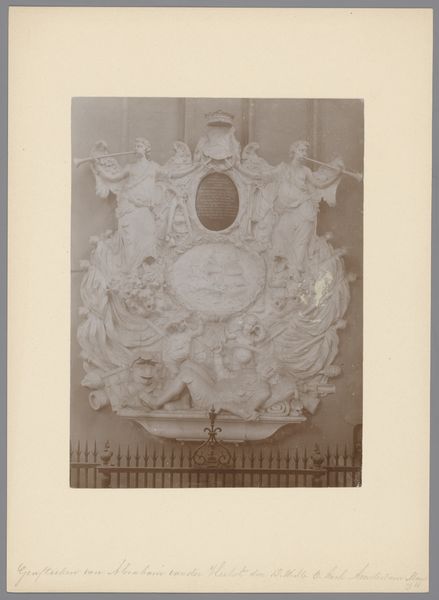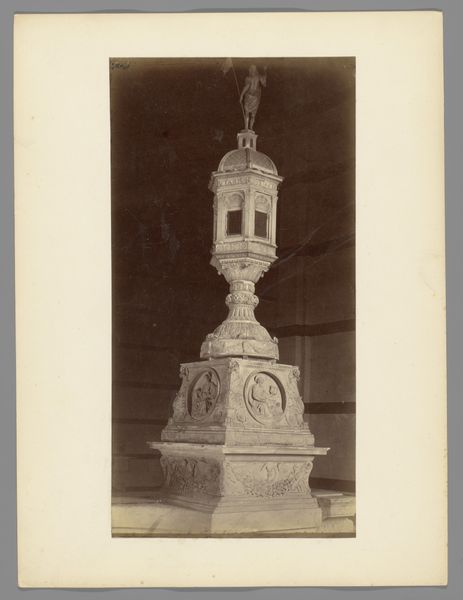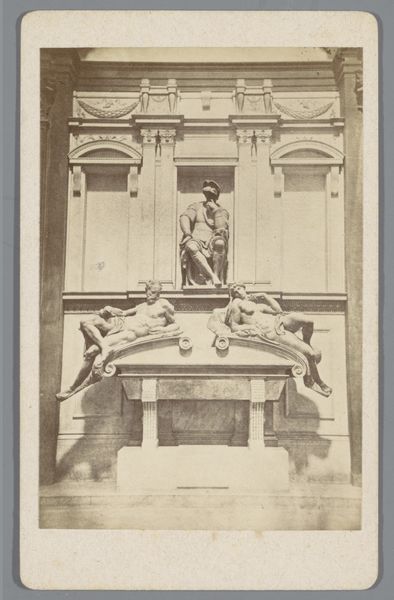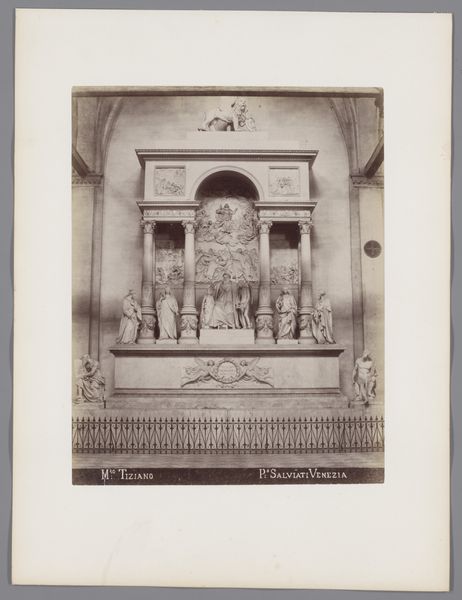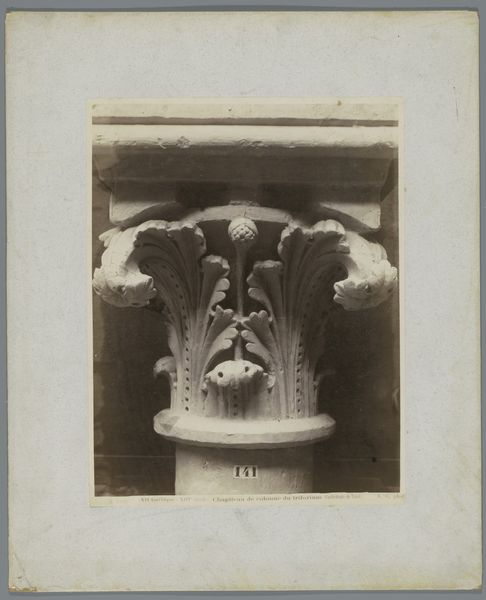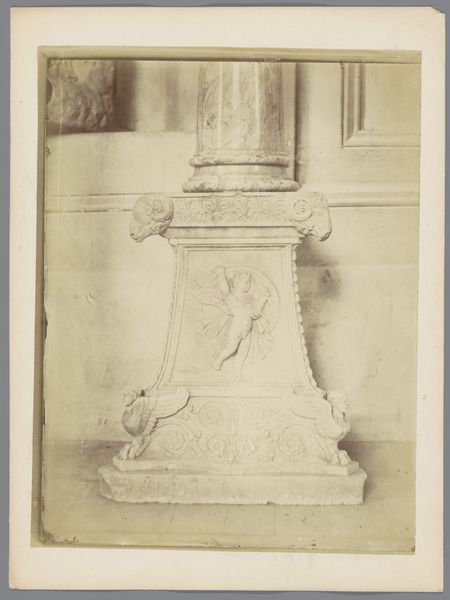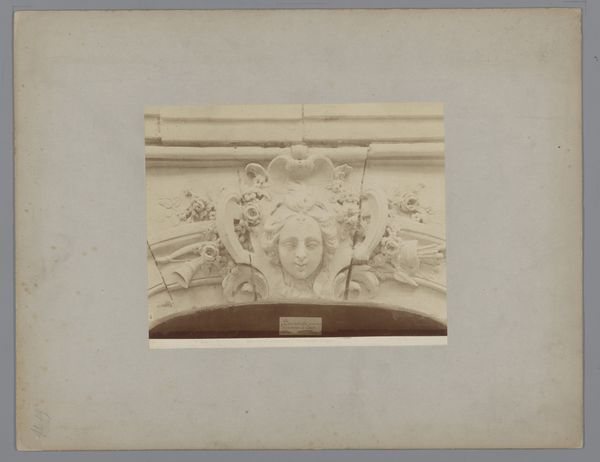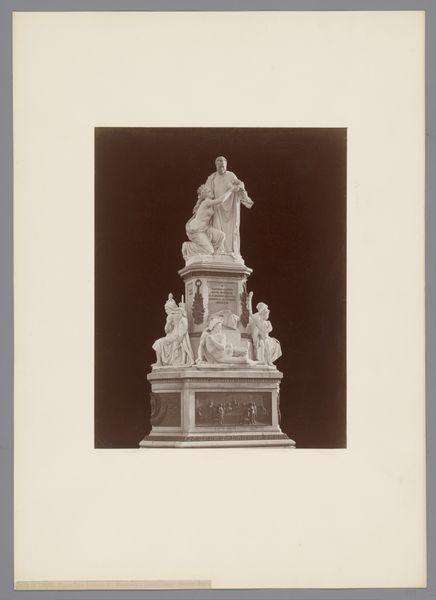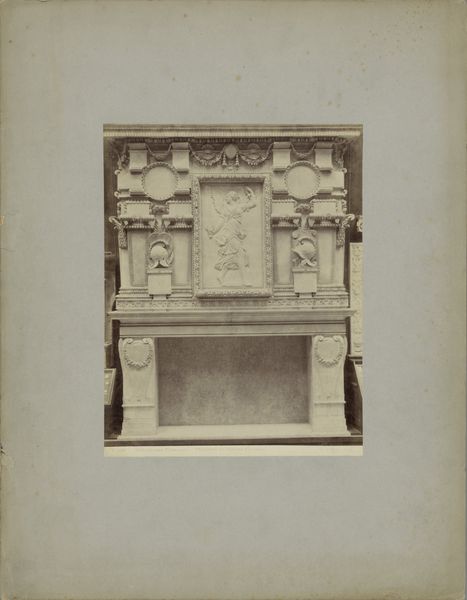
Natuurstenen bekroning van de sluis te Zaandam met de wapens van het Hoogheemraadschap van de Hondsbossche en Duinen tot Petten c. 1875 - 1900
0:00
0:00
mixed-media, silver, print, photography
#
portrait
#
mixed-media
#
silver
# print
#
photography
Dimensions: height 166 mm, width 115 mm
Copyright: Rijks Museum: Open Domain
Editor: Here we have a silver print photograph from between 1875 and 1900 by Dirk Engel, titled "Natuurstenen bekroning van de sluis te Zaandam met de wapens van het Hoogheemraadschap van de Hondsbossche en Duinen tot Petten," which translates to "Natural stone crowning of the lock at Zaandam with the arms of the High Authority of the Hondsbossche and Dunes to Petten". It depicts an ornate stone crest. It feels so imposing and… permanent. What strikes you most about this image? Curator: For me, this crest speaks volumes about power structures. It represents not just the High Authority but also a specific type of governance that dictated water management, crucial to life in this region. Consider the heraldry – lions, crowns, geometric divisions – these are all symbols deployed to project authority. Editor: Right, like, who gets to control the water. How does that relate to the time it was made? Curator: Precisely. Late 19th-century Netherlands was undergoing rapid industrialization, urbanization, and nation-state building. This image serves as a reminder that these processes weren't neutral; power was centralized, often excluding the voices and needs of marginalized communities who also depended on those waterways. We need to ask whose interests were truly being served? Editor: I never would have considered that. It's not just a pretty stone carving. Curator: It is absolutely not *just* that. It’s about interrogating how representations of authority are constructed and how they shape access to essential resources. Considering, too, the work of a photographer and its reproduction, making visible symbols of dominance. What has that visibility helped to further in its cultural moment? Editor: Wow, that gives me a totally different way of thinking about how art reinforces social structures! Thanks!
Comments
No comments
Be the first to comment and join the conversation on the ultimate creative platform.

